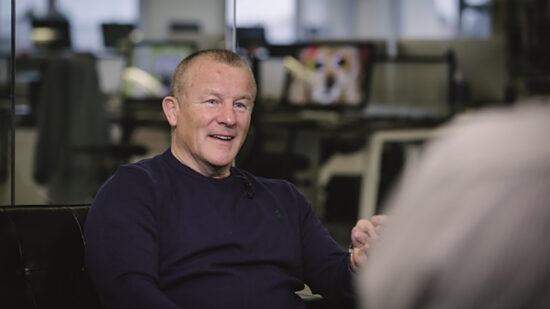Despite the raging second wave of covid-19, the Indian equity market is putting on an impressive show and is among the top performing markets, globally.
The market capitalisation of listed equities on BSE (formerly Bombay Stock Exchange) scaled a new high of $3.39trn (£3.28trn, € 3.80trn) when the benchmark index Sensex touched a peak of 51,937 points last week amid a declining trend in covid cases.
In the continuing rally, the benchmark reached another record of 52,313 points on Tuesday.
Ashish Chauhan, chief executive officer of BSE, said in a tweet that it was a great milestone on a long journey with more than 69 million registered investors, 1,400 brokers, 69,000 mutual fund distributions and 4,700 listed companies.
The only other countries that have a stock market capitalisation of more than $3trn are the US, China, Hong Kong, Japan, the UK, France, and Canada.
The upswing is likely to continue as the country is showing success in limiting the spread of the pandemic even as the prime minister announced free vaccination for all Indian citizens above the age of 18.
The market is betting on an abatement in covid cases, accelerated vaccination, rapid expansion in healthcare infrastructure, normalisation of economic activities and increased foreign investor confidence.
The economy is likely to grow in double digits in the first quarter of FY22 because of the low-base effect of last year as a result of the nationwide lockdown.
Economists expect the devastation of the second wave in 2021-22 to be limited to the April-June quarter. Economic activity is likely to pick up rapidly in the second half of FY22.
Factors such as falling infections, a potential increase in the pace of vaccination, and the oncoming festivals in the following months will likely boost consumer and investment spending owing to strong pent-up demand.
Influencing factors
But how will these developments and projections play out for investors and what should be their investment strategy to derive maximum advantage?
Addressing a webinar on the Indian market outlook, Prashant Jain, economist, chief investment officer and executive director of HDFC Mutual Fund, drew clear guidelines for retail investors.
“Investors should focus on equities for more diversification. Equities are hard to forecast in the short to medium term. In the past 15 years, returns are 11% CAGR. These are reasonable market, cost of capital low, interest cost extremely low.
“It is possible for equities to give reasonably high returns compared to the cost of capital. The best people can do is to think long term in equities.”
Markets are already volatile and 10-15% volatility year-to-year is normal. If you give equities some time, they will yield better returns than fixed income instruments. Both the external and internal environments are better for the economy in the post-covid period.
Equity investors should worry less about inflation than bond investors because equities are hedge against inflation. If prices go up, companies get better prices for their products and inflation may not impact profit growth or value of the businesses. But that could be negative for bonds. Eventually interest rates have to go up if inflation rate rises, thus bond investors may get negative real return for some time.
Promising outlook
Jain based his positive outlook on the following facts:
- Corporate earnings in Q2FY21 & Q3FY21 have been better than expected and resulted in broad-based earnings upgrades;
- FY2021-22 budget with its focus on growth and capex augurs well for new investment cycle and earnings growth;
- Currently, despite the recent rally, Indian market capitalisation is around 90% of GDP (based on 2022 GDP);
- Though the rally is becoming broad based, there are select pockets which are still undervalued compared to their long term averages;
- Company profits are expected to grow this year and in coming years;
- Positive outlook for equities over the long term driven by growth focused budget, low cost of capital, reasonable valuations and strong earnings outlook;
- Corporate profitability has rebounded strongly in FY21 despite weak economic conditions supported by cost savings, strong economic recovery, rise in prices and fall in NPAs.
Further, capital intensive sectors like metals, cements, textiles, pharma and power are seeing strong revival in profit growth. Post opening up, economic recovery has been strong and high frequency activity indicators are normalising at a fast pace supported by unlocking, fiscal and monetary measures and pent up demand.
Risk factors in the near term are: Significant rise in spread of covid-19, sharp rise in crude prices, higher than expected NPAs post the moratorium, sharp FPI outflows and sharp increase in US rates.








